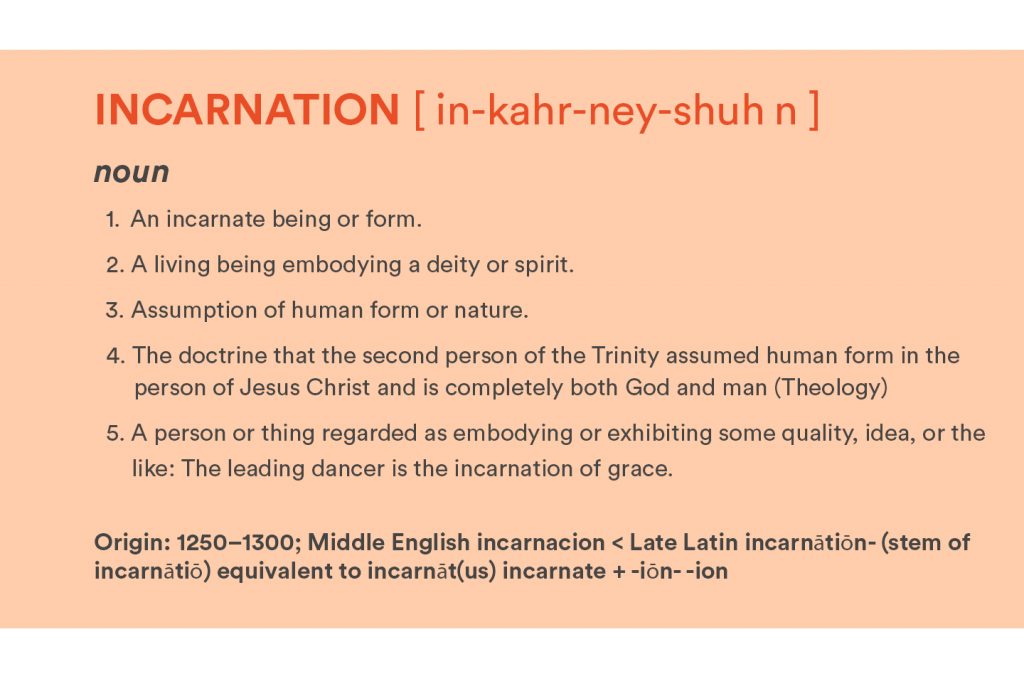
Sometimes brands die. It can result from a number of causes— accidental, poor care, infection, senility. Like people, brands have a lifespan. Although we might try to fight to sustain a brand indefinitely, at times it’s better to accept that it’s time for it to pass.
End of life is something we don’t embrace in western culture. We’re taught not to think of it. Death is feared as a terrifying process of loss. It can be unimaginable to consider the inevitable truth. We will all one day die. But eastern philosophy is quite different, due to a fundamental belief in reincarnation.
Think about your brand’s incarnation today. It’s more than a logo. Your brand is incarnated as an identity; a superset of all your visual communications combined with the perception of your position in the market

Reincarnation is the belief that the “soul” of a living being starts a new life in a different physical form or body after biological death. It’s an existential shift of perception. If your essence is immortal, then death isn’t quite as frightening. In fact, it encourages the use of this life to prepare for the next through learning, compassion and good deeds. In terms of branding, it’s important to generate good Brand Karma today.
> Rebranding is like a corporate reincarnation.
When brands are no longer viable, they too must die. But the consciousness that inspired its existence is eternal. That spirit can live on, to be reborn anew. That new brand carries forth the awareness legacy. It’s informed by the knowledge, experience and accomplishments of the past.

1. Dignity – although your brand is at the end of its life, your customers, employees and stakeholder will live on. Their memory of your choices today will influence your legacy. Aim to honor commitments, settle debts and maintain your composure through difficult times. It raises the likelihood for improvement in your brand’s next life through the law of Karma.
2. Acceptance – coming to terms with the conditions that caused your situation releases negativity that could affect your decisions. By letting go of resentments and feelings of anger for your current condition, you’re more likely to make healthy choices that will lead to a better legacy.
3. Farewell – when you know the end is inevitable, use your remaining time to say goodbye to the people you love. It can be difficult to admit your brand’s mortality, but it helps others process the passing. There are people who might be brought to tears, but the relationships will benefit from the intimacy.
4. Intention – put forward a vision for the future now. Imagine what you could do if you were freed from your current constraints, but still armed with your life experience. Setting goals for how you’ll be reborn could help improve your chances of realizing it.
Past lives are the other facet of reincarnation. Some believe it’s possible to gain insights on life by attempting to access fragments of prior incarnations. Meditation, hypnosis and other guided therapies are designed for this purpose. Many people find enlightenment through these efforts.
Your brand had a past life too— founders bring their life experiences to new ventures which are informed by earlier success and failures. This is why the branding (and re-branding) process begins with facilitated workshops. These sessions help stakeholders reflect on the past, in the context of the present, to recognize important beliefs that will influence the brand in the future. These explorations fuel brand authenticity. Brands must reflect your spirit in order to be sustainable. Maintaining a false identity is exhausting, dishonest and likely to deteriorate over time.
When it’s time for Brand Reincarnation (rebranding) find a methodology that’s defined and proven. Flux Branding crafted the IDEA Method to help lower risk and improve results. Great branding isn’t the product of chance, it’s the result of thoughtful and strategic action.
> The IDEA Method is a 4-step process that reveals brilliant brands.
IDEA = Ignite + Distill + Energize + Activate
Step 1: IGNITE {Brand Discovery}
A comprehensive look inside and outside your company to establish a deep understanding of your offerings, the competition and market trends.
Step 2: DISTILL {Brand Positioning}
The findings are summarized into a strategic document that clearly defines a brand position to differentiate you in the market.
Step 3: ENERGIZE {Brand Identity}
Design and develop a visual system for an authentic brand identity that intuitively communicates the brand position.
Step 4: ACTIVATE {Brand Expression}
Deliver your message to the world by leveraging the brand in communications and campaigns that build awareness and motivate action.
Brands are like human spirits. They’re complex, unique and enigmatic. But through discipline and practice it’s possible to develop great awareness of how they function. It’s a worthwhile undertaking. Branded goods are more desirable by customers willing to pay more for the perceived value they provide.
Finding insights into the current existence and the potential afterlife of your brand will help keep your marketing messages focused. This returns dividends by maintaining relevance with your core audience through an authentic identity that has soul. When you find it, there’s a chance you’ll become the market leader.
